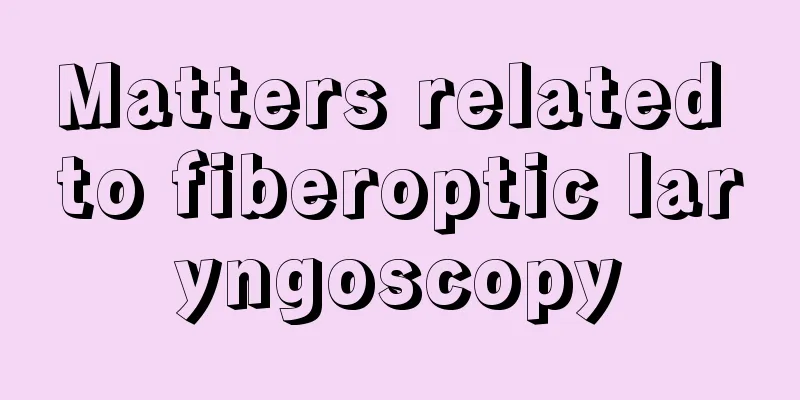Matters related to fiberoptic laryngoscopy

|
In the past, people could only imagine such things in their minds, such as "clairvoyance" and "super hearing". However, with the advancement of technology, these things have become reality. In fact, a computer can see and hear images and sounds thousands of miles away or even on the other side of the earth. Technological progress has also brought about various aspects to medicine. Here we introduce some related matters about fiber laryngoscopy. 1. Indications (1) Patients who have difficulty with indirect laryngoscopy, such as those with extremely sensitive pharynx, prominent upper incisors, difficulty opening the mouth, thick tongue, etc. (2) Such as clenched jaw, cervical ankylosing spondylosis, short neck, etc. (3) Examination of hidden laryngeal lesions or early tiny laryngeal tumors, and observation of vocal cord activity. (4) Biopsy or surgical treatment of smaller vocal cord polyps or nodules. 2. Contraindications Acute inflammation of the upper respiratory tract accompanied by dyspnea. Those with severe heart or lung diseases. 3. Preparation before the inspection (1) Do not drink or eat for 1 to 2 hours before surgery. (2) 30 minutes before surgery, atropine 0.5 mg should be injected subcutaneously. For patients with mental stress, phenobarbital 0.06-0.09 g should be taken orally. (3) Remove the removable denture. 4. Things to note during inspection (1) Anesthesia: Spray 0.5% to 1% tetracaine into the nasal cavity, pharynx and throat 3 to 4 times. The total amount of tetracaine should not exceed 60 mg. Closely observe for allergic reactions. If convulsions occur due to drug allergy, immediately give slow intravenous injection of 2.5% sodium thiopental and oxygen. (2) Body position: Most patients should sit. Those who are nervous or weak can lie on their backs. (3) Hold the scope with your left hand and control the direction button with your thumb. Insert the scope through the oral cavity or nasal cavity into the pharynx under direct vision, with the front end of the scope pointing downward. A distant image of the epiglottis or glottis can be seen. Continue to advance the mirror to the edge of the epiglottis, and use the front curved part to push the epiglottis forward to reach the laryngeal vestibule. The anterior commissure can be seen forward, and the subglottic area can be seen beyond the glottis. Carefully observe mucosal lesions, the presence of neoplasms, and vocal cord activity. After the examination, be sure not to drink or eat within 2 hours to prevent aspiration pneumonia. The above is an introduction to the relevant matters of fiber laryngoscopy. The advancement of science and technology has promoted medicine, so that we are no longer helpless in the face of some diseases, but can do more. I believe that in the future, human beings will have a more comprehensive understanding of themselves, and some diseases will be prevented in advance, and it will even be possible to make some diseases disappear. |
<<: Analysis of the causes of strong urine odor
>>: Introduction of fiber nasopharyngeal endoscope
Recommend
What are the fishes
Many people like to eat fish, but not many people...
How long will it take for a scar to fall off naturally?
No matter what industry the human body is engaged...
What's the matter with 10 in urine routine occult blood
Many people don't pay much attention to what ...
Blood in the stool is the main symptom of rectal cancer
Blood in the stool is the main symptom of rectal ...
How much sleep is normal for a 2 year and 5 month old baby?
If there is a baby at home, parents have a lot to...
How to increase arm strength?
Upper limb strength is very important for both me...
What to do when an elderly person has brain cancer
What should an elderly person do when he or she h...
Regular exercise can prolong ejaculation
We all know that if male friends ejaculate for to...
Relieve hemorrhoid pain immediately
Since many people always sit for a long time at w...
What are the treatments for primary liver cancer
There are no obvious symptoms in the early stage ...
What can I use to remove tattoos
Tattoos are very familiar to many people in daily...
Can early primary lung cancer be completely cured?
Can early primary lung cancer be completely cured...
Men should eat more of these vegetables to prevent prostate cancer
Prostate cancer is a common disease among older m...
Moxibustion lowers heart rate
Moxibustion is a very traditional technology in o...
Transmission routes of syphilis
How is syphilis transmitted? When it comes to syp...









